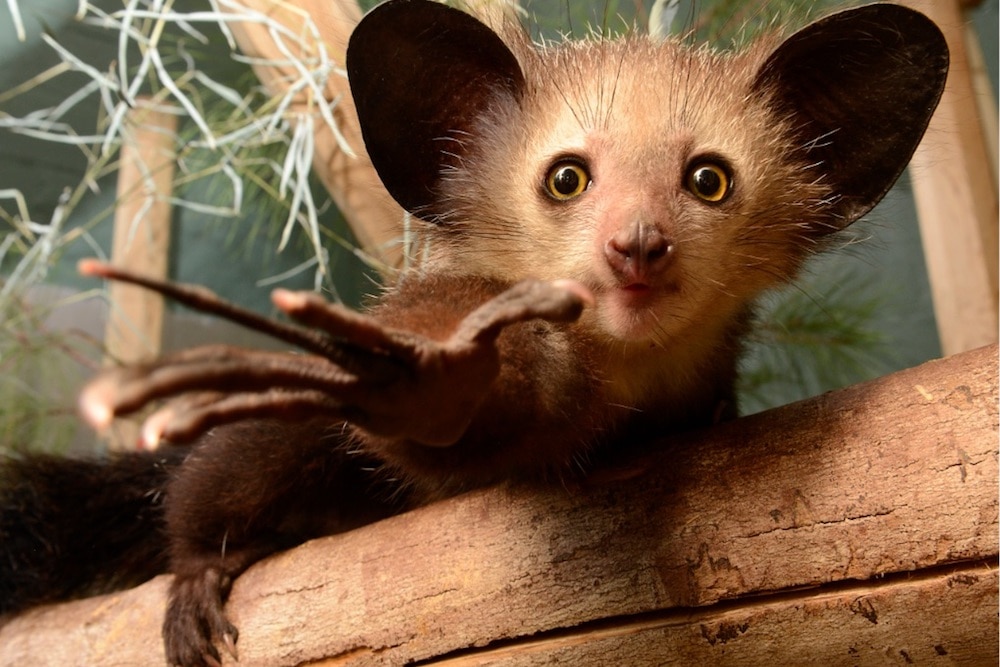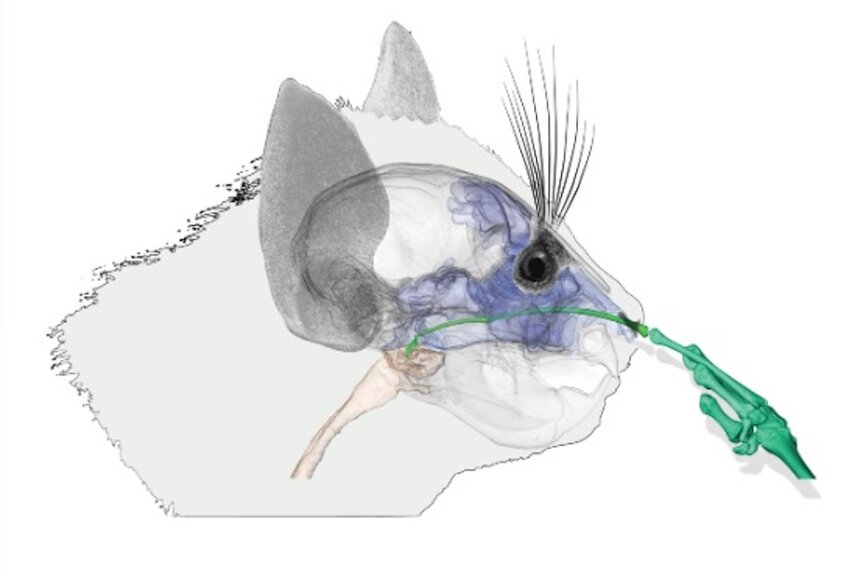Create a free profile to get unlimited access to exclusive videos, sweepstakes, and more!
The aye-aye's spooky long fingers make them nose-picking world champs
What large fingers you have... all the better to pick your nose with.

There are those among us who would go just about anywhere and do just about anything for hidden treasure. Stories of treasure hunters both real and fictional populate our history books and television screens, from Juan Ponce de León’s search for the fountain of youth to Miguel and Tulio’s search for gold in The Road to El Dorado (now streaming on Peacock!). Digging for gold has inspired countless treasure hunters... as well as a euphemism for picking your nose.
The search for these organic nasal nuggets becomes the eventual purview of nearly all human children, as they explore the hard to reach places of their biology with the ever present multitools at the ends of their hands. It turns out that nose-picking isn’t a purely human endeavor. Other animals do it too and some more well equipped than others.
Anne-Claire Fabre, an evolutionary biologist at the Natural History Museum of Bern, was recording the movements and eating habits of animals at the Duke Lemur Center in Durham, North Carolina when she observed something unexpected. One of the aye-ayes — a species of lemur native to Madagascar — started picking its nose with its frighteningly long middle finger. It seems this behavior was well-known among people who spend a lot of time with aye-ayes but had never been scientifically documented or investigated before now. The world-class nose-picking was caught on tape, and watching it is equal parts fascinating and horrifying. You can’t help but wonder where that startlingly long digit is going, and that’s what Fabre set out to discover. The findings were published in the Journal of Zoology.
RELATED: We kind of are the Lizard Man, because our noses actually come from the jaws of reptiles
When you encounter an aye-aye for the first time, you’re likely to notice a disproportionately long finger in the middle of their hands. At least, you’re likely to notice it once you get past their adorably goblin-like appearance. Those fingers are specialized adaptations used to tap on trees and detect the wood-boring insects beneath the bark. Once a grubby meal is discovered, they use those fingers to pry the prize loose and get it in their mouths. Those fingers are also useful for scooping the flesh out of various fruits, and it was only a matter of time before the aye-aye used that finger to explore their own biological recesses.
Nose picking is a common behavior among humans, whether we want to admit it or not, and similar behaviors have been documented in great apes and other primates. This discovery makes the aye-aye the 12th confirmed primate species to pick its nose. While picking your nose appears to be a common feature of primates, non-primate species do something similar but in wholly different ways.
“There is a limitation with the anatomy, you have to have a finger that can enter your nostril. In the literature and the videos we found on the internet, it is limited to primates but that doesn’t mean other animals don’t do it,” Fabre told SYFY WIRE.
Giraffe’s get the job done with their 21-inch tongues, which they use to get deep inside the nooks and crannies of their nasal passages and keep them clean. Other animals, including some primates, use tools like long, thin sticks to get the goods out of their noses.
When it comes to fingers capable of entering a nostril, however, the aye-aye might be the world champion. While most of its fingers are proportional to its body, the middle fingers clock in at about eight centimeters in length. For comparison, if humans had a comparably long finger, it would be about a foot long. Watching this frighteningly long probe enter the nose and just keep going is almost unsettling, but Fabre and colleagues wanted to get a better idea of where that finger was going and what it was doing inside the head.
“It’s putting its entire finger in its nose. It’s kind of impressive and gross. It’s almost eight centimeters, it’s a lot. We modeled where the finger was going by doing a CT scan of a specimen from a museum,” Fabre said.
Those scans mapped the potential routes the aye-aye’s finger might be traveling, and revealed that they likely reach the pharynx at the back of the throat. In case that weren’t disturbing enough, Fabre and colleagues also witnessed the aye-aye eating the contents it pulled from its nose and throat. That too, unfortunately, is a familiar behavior often seen in humans.
That so many species pick their noses and then eat what they find seems to suggest there’s some benefit to this behavior, but scientists are unsure. Prior studies on humans, looking at any potential benefit of eating boogers, have come back with conflicting results. While some studies indicate it introduces additional bacteria to the body and could make you sick, others suggest it could boost the immune system. Importantly, those studies have focused on humans, and might not tell us much about why other animals eat the treasure their bodies create.
Whether picking your nose — and optionally: eating it — has any health benefit remains a matter of debate. But one thing is clear: It is a truth universally acknowledged that an animal in possession of a nostril and a finger, must be in want of a pick.



























